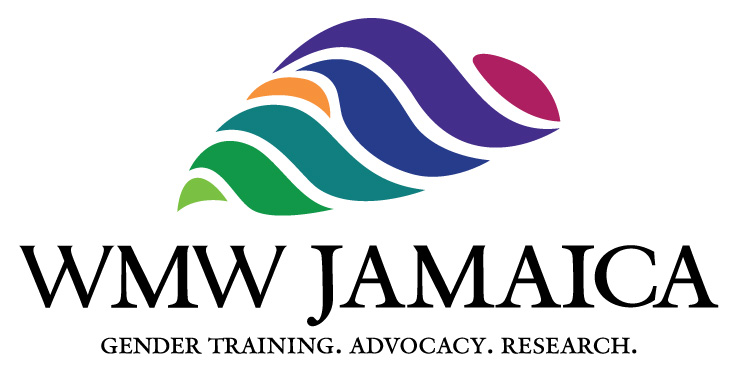Child Pornography
/WMW Newsmag "Looking Out" Jan 2012, Vol 8 #1
Ending child pornography begins at home in how we raise our children, ensuring that they are loved, cared for, well-supported and encouraged to do well.
According to the United Nations, child pornography includes, but is not limited to, “any representation, by whatever means, of a child engaged in real or simulated explicit sexual activities or any representation of the sexual parts of a child for primarily sexual purposes,” as well as the use of a child to create such a representation.
In 2009 Jamaica took the step to implement legislation prohibiting child pornography: the Child Pornography Act (2009).
Until then, there was no separate law prohibiting child pornography; which came under the Obscene Publication Act of 1927 and carried a maximum fine of $40 or three months' imprisonment.
Living in a globalised world where there is increased access to information including internet, cable, illegal DVDs, has opened up pornography to a wider Jamaican public, in particular to child pornography.
While technology offers unparalleled opportunities for children and adults to learn about the world in which we live, it has also had an immeasurable impact on the sexual exploitation of children, specifically through the distribution of sexually exploitive images of children.
For Jamaica, which comprises 38% children, this poses a significant threat and opens up the society’s existing vulnerabilities.
These include high rates of child poverty (22% of all children in Jamaica live in households classified as poor); Jamaica’s poor record in guaranteeing child rights as evidenced by rates of parental abuse, neglect, wounding, child murder (98 in 2010) and treatment of children under the care of the State.
Jamaica also has a high incidence of incest, rape, early sexual exposure, teenage pregnancy and sexual violence against children.
An estimated 7,500 children live and/or work on the street and child prostitution exists especially among children between the ages of 10 and 18 years.
There has been an increase in the circulation of pornographic recordings - whether by cell phone or email - showing persons, including schoolchildren, having sex.
The Gleaner first reported the seriousness of the problem in 2006 after a video featuring a group of boys sexually assaulting a young schoolgirl under the eye of a church deacon, was brought to the newspaper’s attention.
In 2008, a video surfaced depicting two students at a Jamaican high school engaged in a sexual act. The amateur video, recorded with a cell phone by another student, had been circulating via the Internet for weeks.
The current patterns in dancehall tend towards sexual explicitness and hardcore sex (and concurrent influence on youth) and normalize the greater possibilities of pornography, including child pornography.
Jamaica’s 2009 Child Pornography Act provides for sentences of up to 20 years' imprisonment, as well as fines of as much as $500,000.
Crimes include visual presentations of children engaged in sexual activities; audio recordings or written material that has as its dominant characteristic the description or presentation for a sexual purpose, sexual activity with a child; and any audiovisual or written material that advocates sexual activity with a child.
The legislation makes commercial sexual exploitation of children a criminal offence and will apply to the production, possession, importation, exportation and distribution of child pornography.
{cke_protected_1}Jamaica’s Child Pornography Act 2009 derives from international conventions which Jamaica has ratified, including the UN Convention on the Rights of the Child, and the Optional Protocol on the sale of Children, Child Prostitution and Child Pornography (which Jamaica has signed, but not ratified).
Jamaican law defines sexual activities as actual or simulated sexual intercourse; activity other than intercourse involving the penetration of the anus, vagina or mouth with any part of a person's body, or with an object; touching a sexual or anal region in a manner which is considered as sexual; masturbation; sadistic or masochistic abuse.
While it is clear that pornography exists in Jamaica, it is not clear how widely children are targeted or exploited in the production of pornography.
However, given the number of children involved in prostitution and the reasons why, as reported in an ILO 2000 study, there is a direct connection between children living in troubled households, and/or in poverty, and their participation in prostitution and living/working on the streets.
It is this pool of vulnerable children who are likely targets for exploitation.
Pornography is damaging and demeaning. Adult pornography is sexually explicit material that may harm women and harms the portrayal of women. Many feminist definitions define "pornography" as sexually explicit material that endorse women’s subordination.
Pornography also harms men in gender stereotypical ways and promotes hyper-domination.
Objectification of both women and men occurs and pornographic objectification may affect sexual violence. It typically involves the depiction of violence, women tied up, stretched, hanged, f....d, gang-banged, whipped, beaten - begging for more.
Men are depicted with emdless strength and stamina to carry out dominating sex acts.
Jamaica’s 2009 legislation helped to raise awareness and attach new urgency to child pornography.
However, much more needs to be done to expose children’s vulnerability—and to protect them. Treatment for children who are exposed to child pornography is not readily available - another area of child rights that needs attention.
Ending child pornography begins at home in how we raise our children, ensuring that they are loved, cared for, well-supported and encouraged to do well.
If you observe or suspect child pornography in any area that you traverse, be sure to report it to the Children’s Registry, or the Child Development Agency, the Centre for the Investigation of Sexual Offences and Child Abuse - or your nearest police station.


